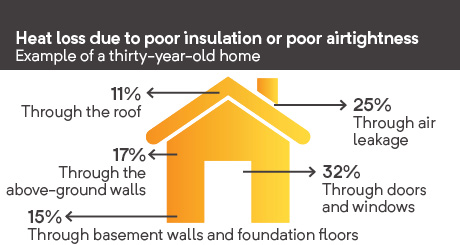A house that is not airtight can raise your heating bill by up to 15% a year, and can cause premature deterioration of the house caused by humidity. Doors, windows and any cracks should be properly sealed. Caulking and weather stripping are low-cost remedies to such problems.


